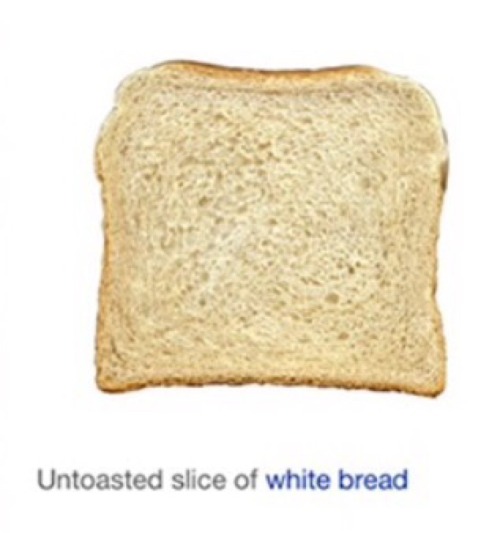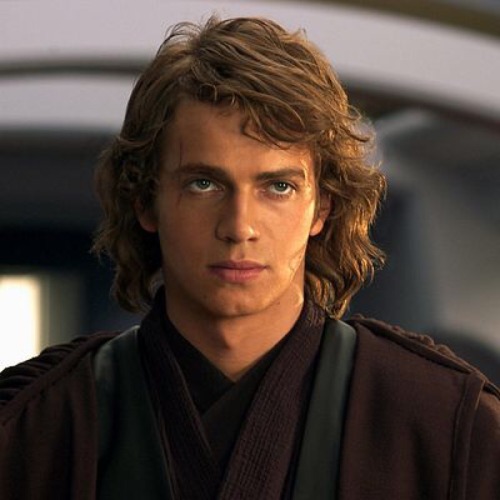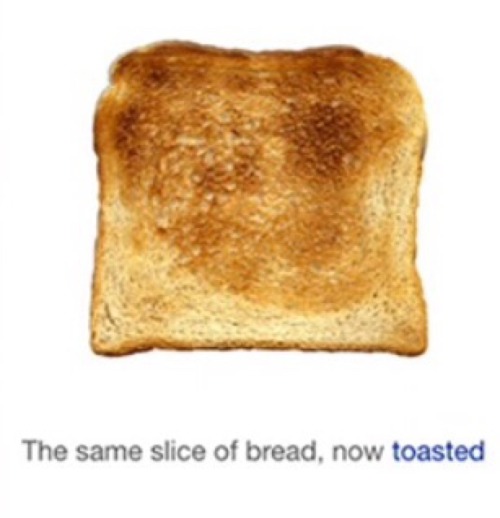An Eye-opening Article About Danmei Radio Dramas In China:
An eye-opening article about Danmei Radio Dramas in China:
https://supchina.com/2021/11/04/the-wild-wonderful-queer-world-of-chinese-radio-dramas/
It’s good. Especially if you’ve experienced the absolute exquisite excellence that is the MDZS radio drama, you’ll enjoy reading it :)

Some quotes:
These societies recruited their own production staff and talent, who collaborated to produce radio dramas and release them online for free. These are known as “web dramas” (网配剧 wǎng pèijù), in contrast with the professionally-produced “commercial dramas” (商配剧 shāng pèijù) that came later. These creators spent time, labor, and often cash on recording equipment, studio time, music, and other services, and made no money from their productions. What they did was, as they like to say, “generate power out of love.”
Despite this move toward a more general taste, danmei remains the most popular genre in radio dramas. At the time of this writing, danmei seasons account for 19 of the top 20 most-followed list on MissEvan. ….Topping the most-played list is The Founder of Diabolism (魔道祖师 módào zǔshī), with each season exceeding 100 million plays.…. Even on Ximalaya — which has a much broader audience than MissEvan’s younger, more female-dominant audience to whom danmei content most appeals — six of the 10 most popular radio dramas are of the danmei genre.
Sometimes the standard can seem arbitrary. “Take kissing for instance,” she says, “some may think eight seconds is okay and let you pass, but some others may think five seconds is too long and must be reduced to four seconds.”
More Posts from Weishenmewwx and Others
The 36 Stratagems in mdzs
🔮 I describe individual scenes in MDZS where each of the 36 Stratagems plays out
🔮 Note that while this post mainly references novel canon, it may wander into CQL territory at times
🔮 I won’t include the detailed history of each of the Stratagems in this meta as they may be too long, but I will include a resource at the end that you can refer to for further reading
🔮 Spoilers ahead!
Let’s go!

Ok so! The 36 Stratagems (三十六计) is an essay on the use of cunning ruses and deceptive tactics on the battlefield, in politics, and in civil matters. It has been attributed to various authors throughout popular history, and references various famous military scenarios in the Warring States era (战国时代) and Three Kingdoms period (三国时代).
The 36 Stratagems are split into six discrete sections, each describing six techniques:
胜战计: victory stratagems
敌战计: enemy fighting stratagems
攻战计: attack stratagems
混战计: chaos stratagems
并战计: proximate (parallel) stratagems
败战计: desperate stratagems
胜战计 Victory stratagems
1. 瞒天过海: crossing the sea without alerting the heavens; i.e. setting a fake objective to mislead others, while concealing progress for the true objective.
Where this plays out in MDZS: Wei Wuxian taking a blindfolded Jiang Cheng to “visit Baoshan Sanren” to “get his core repaired”. This was a ruse to conceal the true objective — a core transfer.
2. 围魏救赵: besieging Wei to rescue Zhao (Wei and Zhao were states in the Warring States period); i.e. attacking something precious to the enemy to avoid a head-on battle and forcing them to retreat.
Where this plays out in MDZS: Jin Guangyao placing a qin string around Wei Wuxian’s neck to force Lan Wangji to stand down at the Guanyin temple.
Bonus: Jin Guangyao is literally “besieging Wei/围魏” here! The word 围, other than “to besiege”, also means “to encircle” or “to surround”.
3. 借刀杀人: killing with a borrowed blade; i.e. outsourcing a difficult or incriminating task to someone else.
Where this plays out in MDZS: Nie Huaisang instigating Lan Xichen to stab Jin Guangyao in the Guanyin temple. Quite literally, he “borrows” Lan Xichen’s sword to do the deed.
4. 以逸待劳: letting others exhaust themselves, and swooping in at the right moment to claim victory or deal the final blow.
Where this plays out in MDZS: Wen Chao instructing the hostages from the various clans to wear the Xuanwu down, with the intention of coming in at the last minute to claim the kill.
5. 趁火打劫: looting a burning house; i.e. taking advantage of a desperate situation to raid a weakened enemy.
Where this plays out in MDZS: Qishan Wen taking advantage of Jiang Fengmian’s absence to launch an attack on Lotus Pier.
6. 声东击西: making a sound in the east to misdirect the enemy, while striking in the west.
Where this plays out in MDZS: Jin Guangyao instigating the second siege of the Burial Mounds to divert everyone’s attention, whilst simultaneously making preparations for his escape to Dongying.
敌战计 Enemy fighting stratagems
7. 无中生有: creating something out of nothing; i.e. creating an illusion or lie to fool people into believing something exists.
Where this plays out in MDZS: Nie Huaisang perpetuating the rumor that his family’s ancestral tomb is actually a man-eating fortress, to prevent grave robbers from entering it.
8. 暗渡陈仓: sneaking through the passage of Chencang while repairing the main roads; i.e. distracting the enemy while taking a shortcut to launch an attack.
Where this plays out in MDZS: Su She devising a similar-sounding qin score to that of Gusu Lan. The discordant notes distracted the Lan disciples, concealing the score’s true purpose — weakening people’s spiritual abilities.
9. 隔岸观火: watching the fire from the opposite bank; i.e. delaying entering a battle until the enemy has been weakened, then moving in at full strength.
Where this plays out in MDZS: Xue Yang slowly chipping away at Xiao Xingchen’s virtue by making him kill innocent people, then revealing the truth at the end to break him.
10. 笑里藏刀: hiding a knife behind a smile: i.e. putting up a friendly appearance to conceal one’s true intentions.
Where this plays out in MDZS: Jin Guangyao’s political maneuvering to make himself seem genial and unassuming, while concealing the truth about his roles in Nie Mingjue’s and Jin Guangshan’s deaths.
11. 李代桃僵: sacrificing the plum tree for the peach tree; i.e. sacrificing some short-term aims for a greater, long-term good.
Where this plays out in MDZS: Wei Wuxian accepting the eventuality of Wang Lingjiao chopping off his hand, and later, sacrificing his own core to restore Jiang Cheng and preserve the Jiang clan in the long run.
12. 顺手牵羊: taking a opportunity to steal a goat; i.e. making use of available resources as they present themselves.
Where this plays out in MDZS: Wei Wuxian leading Lil Apple from the Mo household!
攻战计 Attack stratagems
13. 打草惊蛇: hitting the grass to startle the snake; i.e. making over-the-top gestures to taunt or disrupt the enemy.
Where this plays out in MDZS: Wei Wuxian taunting Wen Chao in the Xuanwu cave for his lack of knowledge of Wen Mao’s writings, to lure Wen Chao away from Wen Zhuliu’s protection.
14. 借尸还魂: borrowing a corpse to resurrect a soul; i.e. fixing up something useless to give it a fresh purpose.
Where this plays out in MDZS: Mo Xuanyu’s body literally being used as a vessel to resurrect Wei Wuxian!
Bonus: here’s a short explanation I previously wrote as part of the cql subs critique for Episode 1 on the poem Chu Ci 楚辞. It’s in para 4.
15. 调虎离山: enticing the tiger to leave the mountain; i.e. luring a strong enemy away from their base of protection to attack them in the open.
Where this plays out in MDZS: the invitation to Jin Ling’s party as a means to lure Wei Wuxian from Burial Mounds and into a set-up.
16. 欲擒故纵: loosening the hold slightly to ensure capture; i.e. allowing an enemy to believe they have a chance to escape, thus getting them to lower their defenses, then crushing their morale.
Where this plays out in MDZS: Wei Wuxian taunting Wen Chao at various intervals instead of killing him outright — letting Wen Chao run a little, then catching up with him to slice pieces off of his body.
17. 抛砖引玉: tossing pieces of brick to get gems; i.e. throwing out pieces of useless information to tempt the enemy into revealing something important.
Where this plays out in MDZS: A-Qing deliberately misinterpreting the term “night-hunt 夜猎” to trick Xue Yang into revealing that he is also a cultivator.
18. 擒贼擒王: defeating the enemy by first defeating their leader.
Where this plays out in MDZS: Nie Mingjue infiltrating Nightless City during the Sunshot Campaign to attack Wen Ruohan, as a means of quickly securing victory.
混战计 Chaos stratagems
19. 釜底抽薪: removing the firewood from the underside of the pot; i.e. cutting off an enemy’s resources or means of attack.
Where this plays out in MDZS: Jin Guangyao making everyone seal their spiritual powers in Guanyin temple, so they would not be able to attack him.
20. 浑水摸鱼: disturbing the water to catch the fish; i.e creating confusion to mask one’s true purpose.
Where this plays out in MDZS: Su She trying to incite mass panic during the second siege of Burial Mounds to get everyone to be suspicious of Wei Wuxian.
21. 金蝉脱壳: the golden cicada shedding its shell; i.e. leaving riches or identifying marks behind to go undercover or escape.
Where this plays out in MDZS: Jin Guangyao, knowing that he has incurred the ire of the clans, preparing to leave his position behind and escape to Dongying.
22. 关门捉贼: shutting the door to catch a thief; i.e. cutting off all escape routes for an enemy.
Where this plays out in MDZS: Xue Yang trapping the juniors in Yi City and turning them around in circles, in order to get close to Wei Wuxian.
23. 远交近攻: allying with people further away while attacking those closest, for a strategic advantage.
Where this plays out in MDZS: Jin Guangyao swearing brotherhood with the two most powerful people outside the Jin clan, whilst simultaneously planning his takeover of the Jin household.
Bonus: here’s another meta I wrote on Jin Guangyao’s personal reasons for joining the sworn brotherhood, in which I also touch on 远交近攻.
24. 假途伐虢: getting safe passage to besiege Guo (a state during the Zhou dynasty); i.e. borrowing an ally’s resources to attack an enemy, then turning on that same ally with those resources.
Where this plays out in MDZS: Xue Yang borrowing the abilities of Shuanghua to kill innocent people, then instigating Xiao Xingchen to turn those same abilities on Song Lan, thus destroying their bond.
并战计 Proximate stratagems
25. 偷梁换柱: replacing the beams with rotting timbers; i.e. disrupting the enemy’s operations by replacing certain supports with inferior varieties.
Where this plays out in MDZS: Jin Guangyao swapping the notes of Cleansing 洗华 with those from the Collection of Turmoil 乱魄抄.
Bonus: here’s a quick explanation on the name 乱魄抄 in my critique of CQL episode 42, para 441.
26. 指桑骂槐: pointing at the mulberry tree while cursing the locust tree; i.e. deliberately misdirecting one’s anger to avoid having to make the first move.
Where this plays out in MDZS: Jin Guangyao forcing Wei Wuxian to reveal himself in the treasure room by addressing him as Mo Xuanyu, accusing him of slander and of causing Qin Su’s death.
Bonus: it’s possible that Nie Huaisang’s name was derived from this particular stratagem — except that instead of the locust tree 槐, he uses the character 怀, which loosely means “to harbor (in one’s heart)”. Both words use the same tone and are similarly pronounced.
27. 假痴不颠: feigning ignorance to lure the enemy into complacency.
Where this plays out in MDZS: this is the crux of Nie Huaisang’s nickname, 一问三不知 “Mr I Don’t Know”!
Bonus: here’s a brief explanation I wrote about 一问三不知 for my critique of CQL episode 34, para 351.
28. 上屋抽梯: removing the ladder when the enemy has reached the roof; i.e. severing an enemy’s recourse or supply lines.
Where this plays out in MDZS: the plot for Su She to finish everyone off at the second siege of Burial Mounds, through the cutting off of everyone’s spiritual abilities and means of escape.
29. 树上开花: tying blossoms on a dead tree; i.e. making something of low value appear useful and beautiful through artifice.
Where this plays out in MDZS: Jin Guangshan accepting Jin Guangyao into the family and bestowing his own generational name on him as a public honor, while continuing to undermine and ill-treat him.
30. 反客为主: forcing the host and guest to change places; i.e. usurping authority by turning the tables.
Where this plays out in MDZS: Wei Wuxian seizing Wen Chao and holding him hostage in the Xuanwu cave.
败战计 Desperate stratagems
31. 美人计: the beauty trap; i.e. sending a beautiful woman to distract the enemy and incite unrest in their camp.
Where this plays out in MDZS: Jin Guangyao literally ensnaring his own father in such a fashion to bring about his death.
32. 空城计: the empty city; i.e. appearing calm despite being at a disadvantage, to fool the enemy into thinking that there is an ambush waiting for them.
Where this plays out in MDZS: Wei Wuxian remaining at ease when confronting Xue Yang in Yi City, despite knowing he would not be able to physically overpower him.
33. 反间计: sowing discord between an enemy and their allies.
Where this plays out in MDZS: Nie Huaisang instigating Bi Cao to write a letter to Qin Su, with the intent of turning her against Jin Guangyao.
34. 苦肉计: inflicting injury on oneself to earn the enemy’s trust and sympathy.
Where this plays out in MDZS: Xue Yang masquerading as an injured Xiao Xingchen to gain entry to the house that Wei Wuxian and the juniors were hiding in.
35. 连环计: chain stratagems; i.e. carrying out different plans as part of a linked, continuous scheme.
Where this plays out in MDZS: Nie Huaisang methodically laying the trail of body parts and clues for Wei Wuxian and Lan Wangji to follow.
36. 走为上: if all else fails, flee, and regroup to fight another day.
Where this plays out in MDZS: Wei Wuxian and Lan Wangji running from the Xuanwu after their escape had been sealed off.
Bonus: there’s a saying 三十六计 走为上计 which means “of all the 36 Stratagems, fleeing is the best”!
References
Translations largely referenced from Military Wikia
Details of each of the Stratagems
Original post on Twitter
https://youtu.be/X424BWOczS4
I now have something to aspire to. Imagine: a whole library of Just MXTX, or even Just MDZS ❤️
Please can you explain the difference of meaning between hanfu and huafu ? Sorry if you already got the question
Hi, thanks for the question, and sorry for taking ages to reply! (hanfu photo via)

The term “hanfu” (traditional Chinese: 漢服, simplified Chinese: 汉服) literally means “Han clothing”, and refers to the traditional clothing of the Han Chinese people. “Han” (漢/汉) here refers to the Han Chinese ethnic group (not the Han dynasty), and “fu” (服) means “clothing”. As I explained in this post, the modern meaning of “hanfu” is defined by the hanfu revival movement and community. As such, there is a lot of gatekeeping by the community around what is or isn’t hanfu (based on historical circumstances, cultural influences, tailoring & construction, etc). This isn’t a bad thing - in fact, I think gatekeeping to a certain extent is helpful and necessary when it comes to reviving and defining historical/traditional clothing. However, this also led to the need for a similarly short, catchy term that would include all Chinese clothing that didn’t fit the modern definition of hanfu -- enter huafu.
The term “huafu” (traditional Chinese: 華服, simplified Chinese: 华服) as it is used today has a broader definition than hanfu. “Hua” (華/华) refers to the Chinese people (中华民族/zhonghua minzu), and again “fu” (服) means “clothing”. It is an umbrella term for all clothing that is related to Chinese history and/or culture. Thus all hanfu is huafu, but not all huafu is hanfu. Below are examples of Chinese clothing that are generally not considered hanfu by the hanfu community for various reasons, but are considered huafu:
1. Most fashions that originated during the Qing dynasty (1644–1911), especially late Qing, including the Qing aoqun & aoku for women, and the Qing changshan and magua for men. I wrote about whether Qing dynasty clothing can be considered hanfu here. Tangzhuang, which is an updated form of the Qing magua popularized in 2001, can also fit into this category. Below - garments in the style of Han women’s clothing during the Qing dynasty (清汉女装) from 秦綿衣莊 (1, 2).

2. Fashions that originated during the Republican era/minguo (1912-1949), including the minguo aoqun & aoku and qipao/cheongsam for women, and the minguo changshan for men (the male equivalent of the women’s qipao). I wrote about why qipao isn’t considered hanfu here. Below - minguo aoqun (left) & qipao (right) from 嬉姷.

Below - Xiangsheng (crosstalk) performers Zhang Yunlei (left) & Guo Qilin (right) in minguo-style men’s changshan (x). Changshan is also known as changpao and dagua.

3. Qungua/裙褂 and xiuhefu/秀禾服, two types of Chinese wedding garments for brides that are commonly worn today. Qungua originated in the 18th century during the Qing dynasty, and xiuhefu is a modern recreation of Qing wedding dress popularized in 2001 (x). Below - left: qungua (x), right: xiuhefu (x).

4. Modified hanfu (改良汉服/gailiang hanfu) and hanyuansu/汉元素 (hanfu-inspired fashion), which do not fit in the orthodox view of hanfu. Hanfu mixed with sartorial elements of other cultures also fit into this category (e.g. hanfu lolita). From the very start of the hanfu movement, there’s been debate between hanfu “traditionalists” and “reformists”, with most members being somewhere in the middle, and this discussion continues today. Below - hanyuansu outfits from 川黛 (left) and 远山乔 (right).

5. Performance costumes, such as Chinese opera costumes (戏服/xifu) and Chinese dance costumes. These costumes may or may not be considered hanfu depending on the specific style. Dance costumes, in particular, may have non-traditional alterations to make the garment easier to dance in. Dunhuang-style feitian (apsara) costumes, which I wrote about here, can also fit into this category. Below - left: Chinese opera costume (x), right: Chinese dance costume (x).

6. Period drama costumes and fantasy costumes in popular media (live-action & animation, games, etc.), commonly referred to as guzhuang/古装 (lit. “ancient costumes”). Chinese period drama costumes are of course based on hanfu, and may be considered hanfu if they are historically accurate enough. However, as I wrote about here, a lot of the time there are stylistic inaccuracies (some accidental, some intentional) that have become popularized and standardized over time (though this does seem to be improving in recent years). This is especially prevalent in the wuxia and xianxia genres. Similarly, animated shows & games often have characters dressed in “fantasy hanfu” that are essentially hanfu with stylistic modifications. Below - left: Princess Taiping in historical cdrama 大明宫词/Palace of Desire (x), right: Wei Wuxian and Lan Wangji in wuxia/xianxia cdrama 陈情令/The Untamed (x).

7. Any clothing in general that purposefully utilizes Chinese style elements (embroidery, fabrics, patterns, motifs, etc). Chinese fashion brand Heaven Gaia is a well-known example of this. Below - Chinese-inspired designs by Heaven Gaia (x).

8. Technically, the clothing of China’s ethnic minorities also fit under the broad definition of huafu, but it’s rarely ever used in this way.
From personal observation, the term “huafu” is mainly used in the following situations:
1. Some large-scale events to promote Chinese clothing, such as the annual “华服日/Huafu Day”, will use “huafu” in their name for inclusivity.
2. For the same reason as above, Chinese clothing including hanfu will often be referred to as “huafu” on network television programs (ex: variety shows).
3. A few Chinese clothing shops on Taobao use “huafu” in their shop name. Two examples:
明镜华服/Mingjing Huafu - sells hanfu & hanyuansu.
花神妙华服/Huashenmiao Huafu - sells Qing dynasty-style clothing.
With the exception of the above, “huafu” is still very rarely used, especially compared to “hanfu”. It has such a broad definition that it’s just not needed in situations for which a more precise term already exists. However, I do think it’s useful as a short catch-all term for Chinese clothing that isn’t limited to the currently accepted definition of hanfu.
If anyone wants to add on or correct something, please feel free to do so! ^^
Hope this helps!
Zhou Shen did another photoshoot for the Mid-Autumn Moon Festival performance. It’s one of his Serious Photoshoots.



https://m.weibo.cn/detail/4812237040521729
And always the huge white sneakers.
MDZS Vol 5 Annotations 6
Part 6 of 6, page 383 - end
♥️

Chinese is so fun. 让他追在我后面跑 I think translates better to “make him run away, but I’ll be in front so he’ll be chasing behind me.”
More under the cut.






And that’s it! The whole story.
Thank you for reading with me.
MDZS Masterlist.
All the Books I'm Annotating Masterlist.
https://youtu.be/clxAsAshb3E
Isn’t it awesome when your absolute favorite singer ever sings an absolutely sublime version of the theme song to one of your favorite tv shows ever, based on one of your favorite favorite books ever?
My Highly Responsible Teenage Daughter keeps reminding me to Clean Up My Phone (delete images and video), so I can’t really justify keeping albums and albums of Zhou Shen pictures on my phone, but I really really want access to Lots of Zhou Shen photos without having to scroll through tumblr for (how long has it been? That’s not sunlight coming through the window, is it?) -
BaikeBaidu to the rescue:
https://baike.baidu.com/pic/%E5%91%A8%E6%B7%B1/15089196?albumId=3139037095&bk_fr=view_album&hit_contrast=1
made a picker wheel for basically zhou shen's entire discography!

tag yourself, i'm 风筝是风的信
-
 dragonsandphoenix liked this · 1 year ago
dragonsandphoenix liked this · 1 year ago -
 mejomonster liked this · 3 years ago
mejomonster liked this · 3 years ago -
 weishenmewwx reblogged this · 3 years ago
weishenmewwx reblogged this · 3 years ago





